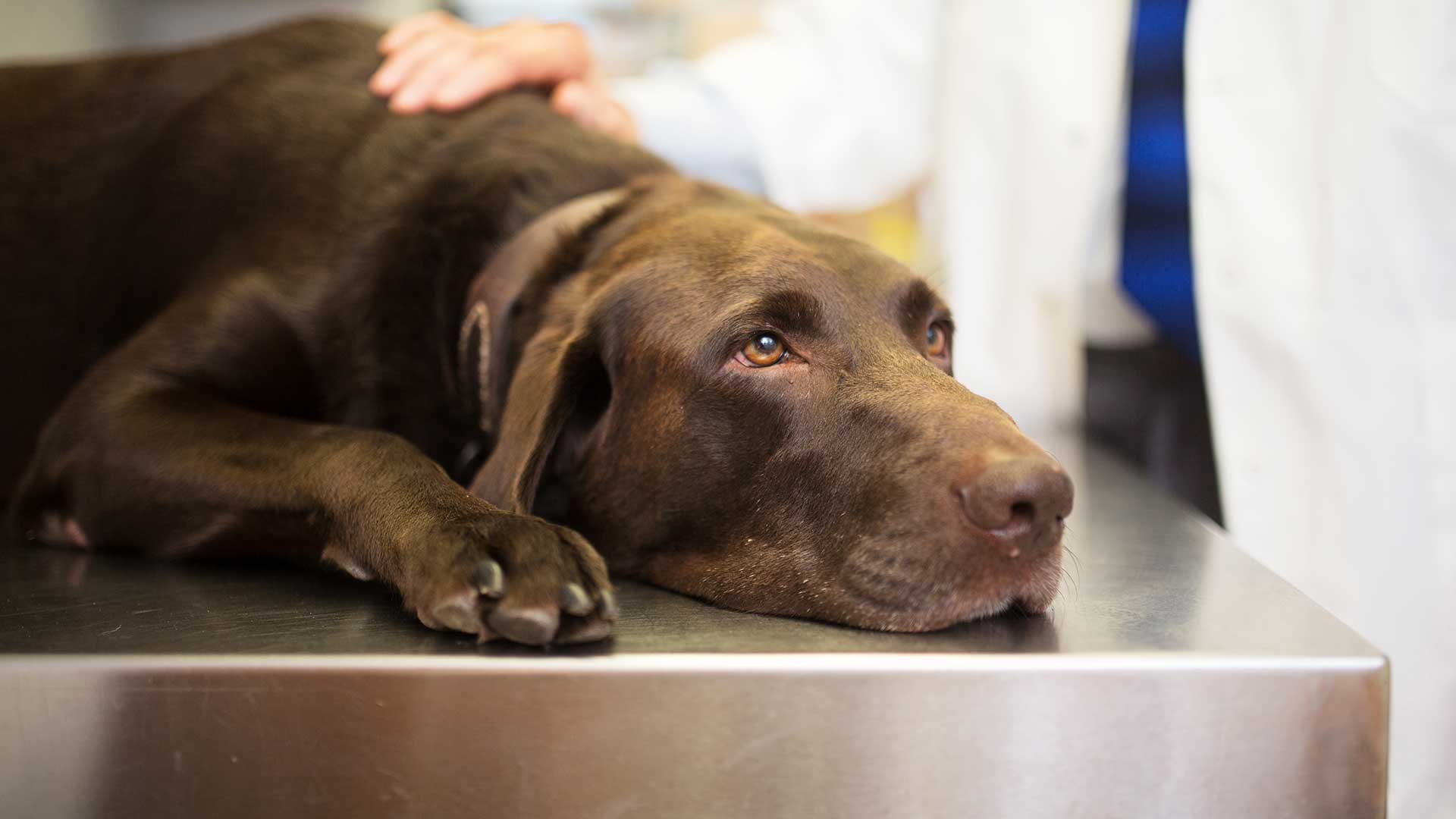Introduction: Your Dog’s Health Is in Your Hands
As a dog owner, you know your furry friend better than anyone. Their wagging tail, playful energy, and loyal companionship light up your life. But what happens when something seems off? Maybe your pup isn’t as bouncy as usual, or their appetite has taken a nosedive. Recognizing the signs of illness in your dog is critical to catching problems early and ensuring they get the care they need. This article dives into the top five signs your dog might be sick, what they mean, and actionable steps to take. Drawing from veterinary insights, personal experiences, and trusted sources, we’ll guide you through this topic with clarity and care, ensuring you feel confident in keeping your dog healthy.
Why Early Detection Matters for Your Dog’s Health
Early detection of illness can make all the difference for your dog’s recovery. Catching symptoms before they escalate can lead to simpler treatments, lower vet bills, and a happier, healthier pup. Dogs are masters at hiding discomfort, a trait inherited from their wild ancestors, so subtle changes in behavior or appearance often signal something deeper. By staying vigilant, you can act swiftly and give your dog the best chance at a full recovery.
The Role of Observation in Pet Care
Paying close attention to your dog’s daily habits—eating, drinking, playing, and even pooping—helps you spot abnormalities early. I remember when my golden retriever, Max, started skipping his favorite fetch sessions. At first, I thought he was just tired, but a vet visit revealed an ear infection. That experience taught me to trust my instincts and act fast when something feels off.
Sign #1: Changes in Appetite or Water Intake
A sudden change in how much your dog eats or drinks is one of the most common red flags. If your dog refuses their favorite kibble, begs less for treats, or drinks excessively, it could point to an underlying issue. Conditions like dental problems, gastrointestinal issues, or even kidney disease can cause these shifts.
What to Look For
- Refusing Food: Skipping meals for more than 24 hours or eating significantly less.
- Increased Thirst: Drinking more water than usual, especially if paired with frequent urination.
- Picky Eating: Turning away from food they usually love, which might indicate pain or nausea.
What It Could Mean
Changes in appetite can stem from minor issues like stress or spoiled food, but they can also signal serious conditions like diabetes, infections, or organ dysfunction. Excessive thirst, for instance, is a hallmark of kidney problems or diabetes mellitus, as noted by veterinary sources like WebMD.
What to Do
- Monitor Closely: Track how long the behavior lasts and note any other symptoms.
- Check the Environment: Ensure their food hasn’t gone bad or their bowl isn’t dirty.
- Call Your Vet: If changes persist beyond 24–48 hours, consult a veterinarian for bloodwork or a physical exam.
Sign #2: Lethargy or Unusual Fatigue
If your dog, who usually races to the door for walks, is now sleeping all day or moving sluggishly, it’s time to take notice. Lethargy can be a sign of anything from mild fatigue to serious illness like heart disease or infections.
Recognizing Lethargy
- Reduced Activity: Avoiding playtime, walks, or usual activities.
- Excessive Sleeping: Spending more time napping than engaging with you.
- Slow Response: Taking longer to respond to commands or stimuli.
Potential Causes
Lethargy might result from pain (e.g., arthritis), infections (e.g., kennel cough), or even emotional issues like anxiety. In my case, when Max seemed unusually tired, I learned that ear infections could sap a dog’s energy. More severe causes, like heartworm disease, are also possible, especially in regions like Louisiana or Texas, where it’s prevalent.
Action Steps
- Observe Patterns: Note when lethargy started and if it’s consistent or occasional.
- Check for Pain: Gently feel your dog for sore spots or swelling.
- Seek Veterinary Care: Persistent lethargy warrants a vet visit to rule out infections or chronic conditions.
Sign #3: Vomiting or Diarrhea
Occasional vomiting or diarrhea isn’t always a cause for alarm—dogs sometimes eat something they shouldn’t. But frequent or severe episodes are a clear sign something’s wrong, potentially pointing to gastroenteritis, parasites, or even poisoning.
Symptoms to Watch
- Frequent Vomiting: More than once or twice in 24 hours, especially with blood or bile.
- Persistent Diarrhea: Loose stools lasting over 48 hours or containing blood.
- Accompanying Signs: Lethargy, dehydration, or loss of appetite alongside digestive issues.
Possible Underlying Issues
Gastroenteritis, caused by bacteria, viruses, or dietary indiscretions, is a common culprit. Parasites like worms can also cause digestive upset, as can serious conditions like parvovirus, which is life-threatening if untreated. Dr. McCormack from This Dog’s Life emphasizes the urgency of addressing vomiting with a bloated tummy, as it could indicate a critical issue like gastric torsion.
What to Do
- Withhold Food Temporarily: For mild cases, fast your dog for 12–24 hours (with vet approval) and offer small amounts of water.
- Introduce Bland Diet: Gradually reintroduce plain rice and boiled chicken if symptoms improve.
- Visit the Vet: Immediate veterinary attention is needed for persistent symptoms, blood in vomit/stool, or signs of dehydration.
Sign #4: Changes in Behavior or Mood
Dogs are creatures of habit, so shifts in their personality or behavior can be a big clue they’re not feeling well. If your normally friendly dog is suddenly aggressive, withdrawn, or anxious, it’s worth investigating.
Behavioral Red Flags
- Irritability: Snapping or growling when touched, which could indicate pain.
- Hiding or Clinginess: Seeking isolation or becoming overly dependent.
- Confusion: Disorientation or pacing, especially in older dogs.
What It Might Indicate
Behavioral changes can stem from pain, neurological issues, or even hormonal imbalances. For example, my friend’s labrador started hiding under the bed, which turned out to be a reaction to a urinary tract infection. In senior dogs, confusion might point to canine cognitive dysfunction, a condition similar to dementia.
How to Respond
- Assess the Environment: Rule out stressors like new pets or loud noises.
- Monitor for Pain: Check if specific actions (e.g., petting) trigger reactions.
- Consult a Vet: Behavioral changes lasting more than a day or two require professional evaluation.
Sign #5: Abnormal Physical Signs
Physical symptoms like unusual lumps, skin changes, or respiratory issues are often the most visible signs of illness. These can range from minor skin irritations to serious conditions like cancer or respiratory infections.
Key Physical Symptoms
- Lumps or Swellings: New growths or bumps under the skin.
- Skin Issues: Redness, hair loss, or sores, like those seen in cases of mange or allergies.
- Breathing Problems: Coughing, wheezing, or difficulty breathing, which could indicate kennel cough or heart issues.
Potential Causes
Lumps could be benign cysts or malignant tumors, requiring a vet’s diagnosis. Skin issues might point to allergies, fleas, or infections, while respiratory distress could signal heartworm or pneumonia. A post on X mentioned dogs in Venice Canals, Los Angeles, collapsing with seizures and vomiting, highlighting the urgency of addressing sudden physical symptoms.
What to Do
- Examine Your Dog: Perform a gentle at-home check, looking under the tail, in the ears, and along the body, as suggested by Humane World for Animals.
- Avoid Self-Diagnosis: Don’t rely on Google for treatment plans, as misinformation can lead to harmful decisions, like giving dogs human medications.
- Schedule a Vet Visit: Any new lump, persistent skin issue, or breathing difficulty needs immediate professional attention.
Comparison: Normal vs. Concerning Symptoms
To help you differentiate between normal dog behavior and potential illness, here’s a comparison table:
| Symptom | Normal | Concerning |
|---|---|---|
| Appetite | Eats regularly, enjoys treats | Skips meals for 24+ hours, refuses favorite foods |
| Energy Levels | Playful, active during usual times | Lethargic, avoids walks or play for days |
| Digestion | Occasional vomiting (e.g., after eating grass), regular stools | Frequent vomiting/diarrhea, blood in stool, or symptoms lasting over 48 hours |
| Behavior | Consistent personality, responds to routines | Sudden aggression, withdrawal, or confusion |
| Physical Signs | Shiny coat, clear eyes, normal breathing | Lumps, hair loss, coughing, or difficulty breathing |
Pros and Cons of At-Home Monitoring vs. Veterinary Care
Pros of At-Home Monitoring
- Cost-effective for minor issues.
- Helps you know your dog’s baseline behavior.
- Can catch subtle changes early.
Cons of At-Home Monitoring
- Risk of missing serious conditions.
- Limited ability to diagnose complex issues.
- Potential for delaying critical treatment.
Pros of Veterinary Care
- Accurate diagnosis with professional tools (e.g., bloodwork, imaging).
- Access to treatments like antibiotics or surgery.
- Expert guidance tailored to your dog’s needs.
Cons of Veterinary Care
- Can be expensive, especially for diagnostic tests.
- May require multiple visits for chronic conditions.
- Stressful for some dogs (e.g., vet anxiety).
People Also Ask (PAA) Section
How Can I Tell If My Dog Is Sick?
Look for changes in appetite, energy, behavior, digestion, or physical appearance. Persistent symptoms like vomiting, lethargy, or lumps require a vet’s evaluation. Monitor your dog’s habits and trust your instincts if something feels off.
What Are Emergency Symptoms in Dogs?
Emergency symptoms include difficulty breathing, uncontrolled vomiting, seizures, collapse, or a bloated abdomen. If you notice these, rush your dog to an emergency vet immediately, as they could indicate life-threatening conditions like gastric torsion or poisoning.
Can I Treat My Dog’s Illness at Home?
For mild issues like brief vomiting or diarrhea, you can try fasting and a bland diet with vet approval. However, persistent or severe symptoms require professional care. Avoid giving human medications, as they can be toxic to dogs.
How Often Should I Take My Dog to the Vet?
Healthy dogs should visit the vet annually for wellness exams and vaccinations. If you notice any of the signs above, schedule a visit sooner. Regular checkups help catch issues early, especially for senior dogs.
What to Do If You Suspect Your Dog Is Sick
If you notice any of the signs above, follow these steps to ensure your dog gets the care they need:
- Observe and Document: Keep a log of symptoms, including when they started and their severity.
- Perform a Basic Check: Gently examine your dog for lumps, sores, or abnormal breathing, as outlined by Humane World for Animals.
- Call Your Vet: Describe symptoms in detail; many clinics offer phone consultations to assess urgency.
- Avoid Dr. Google: While it’s tempting to search online, misinformation can lead to harmful decisions. Stick to reputable sources like the AVMA or ASPCA for general pet health info.
- Act Quickly for Emergencies: If your dog shows severe symptoms like seizures or collapse, seek emergency care immediately.
Where to Get Help
- Local Veterinarians: Find a trusted vet through the American Veterinary Medical Association (AVMA) website.
- Emergency Clinics: Search for 24/7 veterinary hospitals in your area for urgent cases.
- Pet Insurance: Consider plans like those from Pawlicy Advisor to offset costs for diagnostics and treatments.
Best Tools for Monitoring Dog Health
- Pet Health Apps: Apps like Pet First Aid by the American Red Cross offer guidance on basic care and emergency steps.
- Symptom Trackers: Use a notebook or apps like PetDesk to log symptoms and share with your vet.
- Home Exam Guides: Resources like WebMD’s Dog Health Symptoms A-to-Z provide checklists for at-home monitoring.
FAQ Section
How Do I Know If My Dog’s Symptoms Are Serious?
Persistent symptoms (lasting over 24–48 hours), blood in vomit/stool, or sudden changes like collapse or seizures are serious. Contact your vet immediately for an evaluation.
Can Stress Cause My Dog to Act Sick?
Yes, stress can cause symptoms like reduced appetite or lethargy. Rule out environmental triggers (e.g., new pets, loud noises) and consult a vet if symptoms persist.
Should I Give My Dog Human Medications?
Never give your dog human medications without veterinary guidance. Drugs like aspirin or Pepto-Bismol can be toxic or mask symptoms, complicating diagnosis.
How Can I Prevent My Dog from Getting Sick?
Regular vet checkups, a balanced diet, exercise, and parasite prevention (e.g., flea and heartworm meds) reduce illness risks. Keep toxic foods and substances out of reach.
What Are the Most Common Dog Illnesses?
Common illnesses include ear infections, gastroenteritis, arthritis, and parasites like fleas or worms. Regular vet visits and preventive care help manage these risks.
Building Trust: Why Veterinary Advice Trumps Online Searches
When it comes to your dog’s health, trust is everything. As a pet owner, I’ve been tempted to Google symptoms late at night, but I’ve learned the hard way that online advice often leads to panic or wrong conclusions. Veterinary expertise, backed by years of training and hands-on experience, is irreplaceable. Sites like Dogster.com, which use veterinarian-reviewed content, highlight the importance of credible sources. By combining your observations with professional care, you create a powerful team to keep your dog thriving.
Conclusion: Be Your Dog’s Health Advocate
Your dog relies on you to notice when something’s wrong and take action. By recognizing the top five signs of illness—changes in appetite, lethargy, vomiting/diarrhea, behavioral shifts, and physical symptoms—you can catch problems early and seek the right care. Whether it’s a quick call to your vet or an emergency visit, acting swiftly can save your dog’s life. Stay observant, trust your gut, and lean on professionals for guidance. Your furry friend deserves nothing less than your best effort to keep them healthy and happy.
























